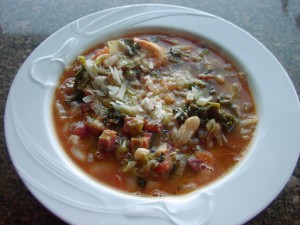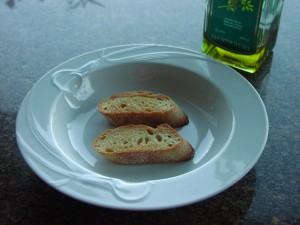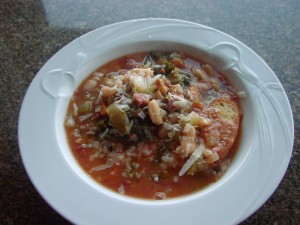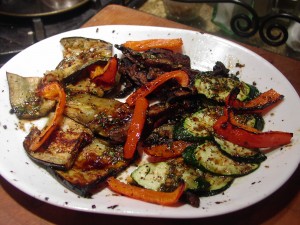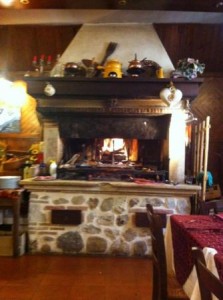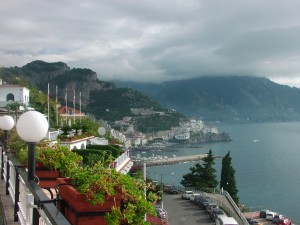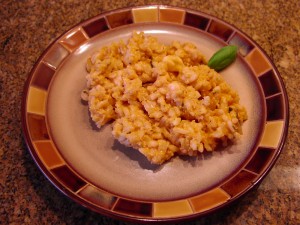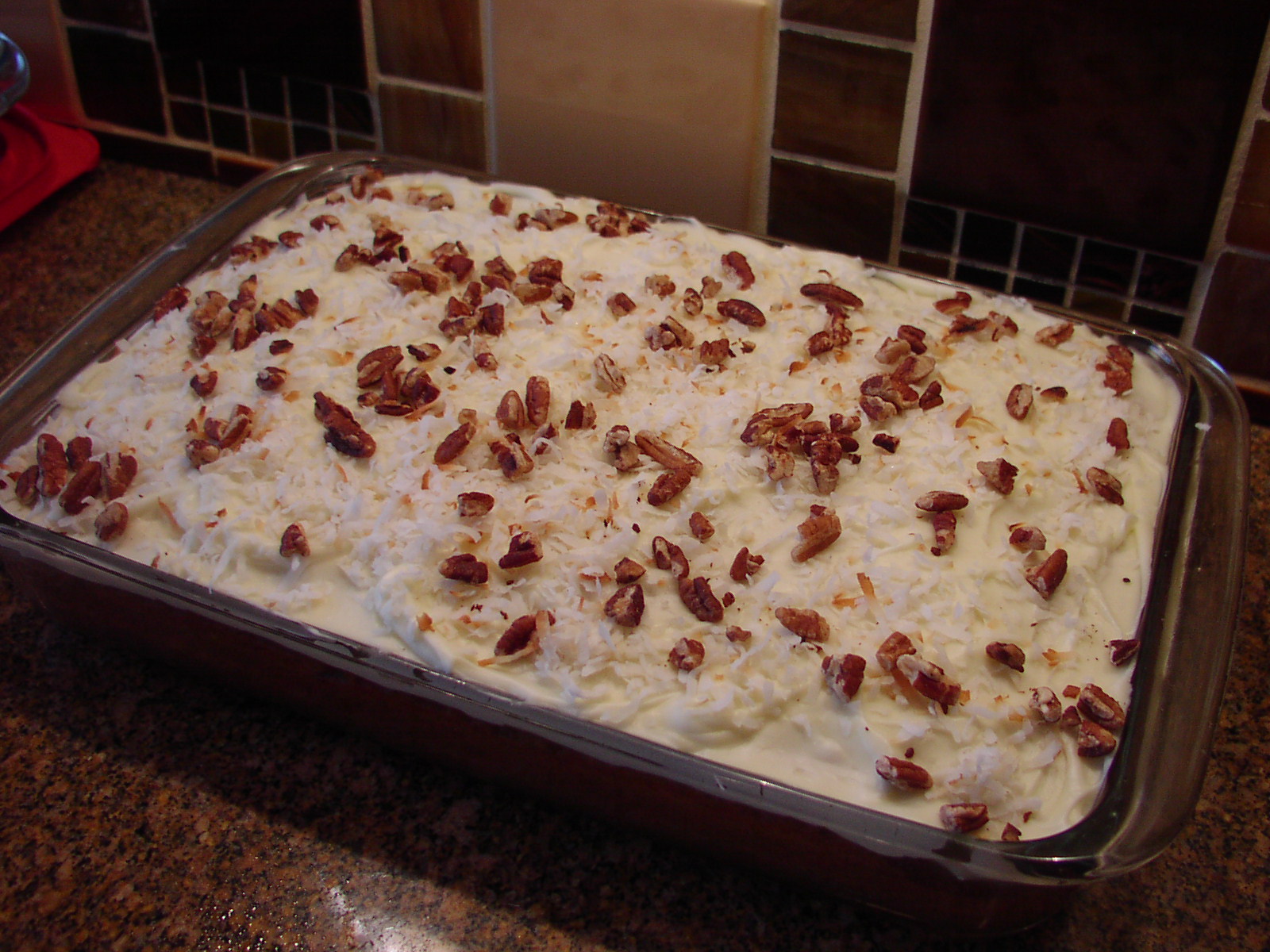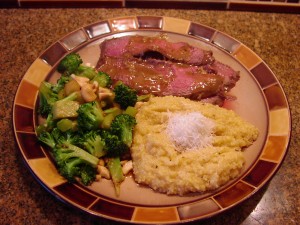While in Italy recently we spent a couple of nights on the beautiful Isle of Ischia in the Gulf of Naples. The Isle of Ischia is the birthplace of our dear friend Gaspare Trani, who until recently owned along with his wife Diane, the fabulous Gaspare’s Ristorante in the Phinney Ridge neighborhood of Seattle. (I am still in mourning! Gaspare actually had the gall to sell the restaurant and semi-retire.) It is still possible to experience his wonderful food however because he retained the catering side of the business. For more information or to place an order, please visit their website www.gasparesrestaurant.com or email them at diannetrani@yahoo.com.
Before we left for Italy we asked the Tranis where we should dine while in Ischia Porto. (Who better to ask after all?) They quickly answered that by all means we should eat at Ristorante da Raffaele. So not being dummies we took their excellent advice and ended up eating there both nights.
The second night we were not exceedingly hungry so we thought we would just start with a bowl of soup each and then share a primi or secondi. I ordered a cream of mushroom soup and Mr. C ordered the Fagioli (bean soup). While my soup was good; Andy’s was outstanding. So good in fact that he only shared one itsy-bitsy little spoon full with me. But the taste I did have left me wanting more. So when I got home I went on a quest for the perfect bean soup.
My search took me all through Italy. What I soon realized was that there are as many recipes for bean soup in Italy as there are cooks. And being the wise, practical and wonderful cooks that the Italians are, their soups often contain whatever happens to be on hand. You have a small piece of leftover pancetta and a few seriously sad veggies in the bottom of your refrigerator, no problem. Make a soup. And that soon to be moldy rind of Parmesan, well what the heck throw that in too. And while you’re at it, why not toast up yesterday’s baguette and add it to the soup at the last moment for some crunch and another depth of flavor.
Like I said, after looking at many recipes and also drawing on many years of making soup almost every cool weather weekend, I came up with my own take on a non-regional but distinctly Italian bean and vegetable soup. Don’t be put off by the long list of ingredients. The soup actually goes together fairly quickly. And don’t limit yourself just to the veggies I use. You have a lone zucchini looking lonely and forlorn in your veggie drawer, dice it up and add it towards the end of the cooking time. Same with a small amount of butternut squash, cauliflower, parsnip, etc. The only vegetable I would not add is potato. There is already plenty of starch provided by the beans.
So next time you are in the mood for a hearty and delicious soup, build yourself a pot. As with most soups, it’s even better the second or third day. It also freezes beautifully.
(More to come on the Isle of Ischia)
- 2 c. dried white beans, such as cannellini or Great Northern
- kosher salt
- 1/4 c. extra virgin olive oil, plus extra for toast and serving
- scant 1/4 lb. finely diced pancetta or thick lean smoked bacon, opt.
- 2 small yellow onions, chopped
- 3 small carrots, chopped
- 3 stalks celery, chopped
- 1 fennel bulb, thinly sliced
- 1 tsp. kosher salt
- freshly ground black pepper
- 6 cloves garlic, divided
- 1/4 tsp. crushed red pepper flakes
- ½ tsp. toasted fennel seeds, crushed
- 1 (28-ounce) can Italian plum tomatoes, like Cento or 1 box Pomi brand chopped Italian tomatoes
- 4 lightly packed cups coarsely chopped or shredded Savoy or napa cabbage
- 4 lightly packed cups coarsely chopped kale
- 1/2 c. chopped fresh basil leaves
- 3-inch piece of Parmesan rind
- 6 c. chicken or vegetable stock
- rustic baguette, sliced
- freshly grated Parmesan, for serving
In a large bowl, cover the beans with cold water. Cover and allow to soak overnight in the refrigerator. Drain the beans and place them in a large pot with 8 cups of water; bring to a boil. Lower the heat and simmer uncovered for 45 minutes. Add 1 teaspoon of salt and continue to simmer for about 15 minutes, or until the beans are tender. Set the beans aside to cool in their liquid.
Meanwhile, heat the ¼ cup olive oil in a large stockpot. Add the pancetta and cook until crisp. Remove from pan and set aside. Add the onions, carrots, celery, fennel, salt, and pepper; cook over medium-low heat until the veggies start to brown. Add 5 cloves of the garlic that have been finely minced, red pepper flakes, and toasted fennel seeds. Cook over medium-low heat until the garlic releases its aroma, about a minute. Add the tomatoes with juice, cabbage, kale, basil, and Parmesan rind. Cook over medium-low heat, stirring occasionally, for another 7 to 10 minutes.
Drain the beans, reserving the cooking liquid. In the bowl of a food processor, puree half of the beans with a little of the reserved cooking liquid. Add to the stockpot, along with the remaining whole beans. Pour the bean cooking liquid into a large measuring cup and add enough chicken stock to make 8 cups. Add to the soup along with the reserved fried pancetta and bring to a boil. Reduce the heat and gently simmer for 30 minutes. Adjust seasoning.
Meanwhile baste both sides of the baguette slices with olive oil and bake in a pre-heated 400 degree oven until crispy brown, about 9 minutes on the first side, flip and a good 3 minutes on the other. Remove toast from oven and with the remaining garlic clove, skinned but left whole, scrape each piece of the toast. (You will be surprised how quickly the clove of garlic “melts” into the toast. You might even need an additional clove.) Set aside until ready to dish up the soup. Warning: Do not start eating the toast or you won’t have room for the lovely soup!
To serve the soup, place 2 pieces of toast in each soup bowl and ladle the soup over the toasts.
Drizzle with olive oil, sprinkle with Parmesan and serve immediately.

